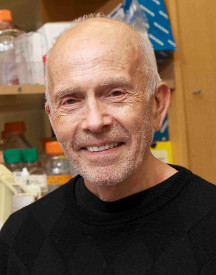Researchers uncover new ‘proofreading’ mechanism in gene translation
When it comes to translating genes into proteins, a typo can be deadly. That’s why cells have a number of proofreading mechanisms to prevent errors.
In a new study, a team of researchers from Scripps Research, working in collaboration with scientists from the University of California, San Diego, has reported a previously unknown part of the proofreading mechanism that ensures genes get properly translated to proteins.
The team found that when the protein that controls the process is defective, in nerve cells in particular, it can allow dangerous, misfolded proteins to accumulate. This leads to cellular behavior similar to what’s seen in neurological disease such as Alzheimer’s and Parkinson’s diseases. The findings were reported May 16, 2018, in Nature.
“Most people know that diseases can be associated with specific mutations,” says Paul Schimmel, PhD, a professor on Scripps Research’s Florida and California campuses. “But this work showed that a single mutation that causes only a tiny percentage of errors in decoding can result in wholesale changes in potentially all proteins, not just one. That’s because the error-correcting mechanism is needed to ensure the quality of every protein in a cell.”
Schimmel is a world-renowned expert in studying the enzymes and processes involved in correcting errors that can occur in the interpretation of genetic information. He co-led the new study with neuroscientist and geneticist Susan Ackerman, PhD, Stephen W. Kuffler Chair in Biology at UC San Diego and a Howard Hughes Medical Institute investigator.
Earlier studies have revealed that one way to avert pending errors is to use water to wash away the potential mistake—a crucial step in protein synthesis. But the new proofreading mechanism hinges on a protein—called ANKRD16—whose function was totally unknown until now.
The researchers used a type of laboratory mouse called a “sticky mouse,” nicknamed for its unkempt, almost sticky-looking fur. These mice have been engineered to have a particular error in making proteins, and they’re an important model for studying mechanisms of neuronal degeneration.
For the Nature study, the investigators investigated a type of nerve cell called Purkinje cells. They found that in these cells, the ANKRD16 protein itself, rather than water, intervenes to capture and sequester the pending error. For a mouse that has a mildly defective, water-based, error-correcting system, ANKRD16 is essential for maintaining healthy brain cells.
This research has important implications for learning more about the development of conditions like Alzheimer’s and Parkinson’s disease, which are characterized by the accumulation of misfolded proteins inside cells. “The underlying cause of many neurological diseases is not known,” Schimmel says. “This works point to an important link of neurological pathology to the error-correcting machinery of the cell.”
Future research will focus on whether this mechanism for proofreading errors is generalizable to many types of mistakes, and whether it effects certain proteins more than others. In addition, research will focus on transferring these findings from laboratory mice to humans.
“It’s of great interest to interrogate the genomes of those afflicted with neurological disorders of unknown cause—to determine if they have a mutation in the error-correcting machinery, such as what we saw in this study,” Schimmel concludes.
First authors of the study, “ANKRD16 prevents neuron loss caused by an editing-defective tRNA synthetase,” were My-Nuong Vo of Scripps Research and Markus Terrey of UC San Diego. Additional authors were James J. Moresco, Litao Sun, and John R. Yates III of Scripps Research; Jeong Woong Lee of the Korea Research Institute of Bioscience and Biotechnology; Bappaditya Roy, Qi Liu, and Kurt Fredrick of The Ohio State University; Thomas G. Weber of Dynamic Biosensors GmbH; and Hongjun Fu of Columbia University.
This study was funded by the National Institutes of Health (grants R01NS42613, R01GM072528 and R01CA92577) and the National Foundation for Cancer Research.
Send comments to: press[at]scripps.edu














